Table of Contents
- Perfect Grilled Vegetables in 15 Minutes: Step-by-Step Guide
- Why Grilling Beats Other Cooking Methods (The Real Science)
- Best Vegetables for Grilling: Timing Chart & Pro Tips
- Prep Secrets Restaurant Chefs Use (No More Sticking!)
- Exact Temperatures & Methods for Each Vegetable
- Flavor-Boosting Marinades (Ready in 5 Minutes)
- Perfect Pairings: Sauces That Make Vegetables Shine
- 7 Costly Mistakes That Ruin Grilled Vegetables
- Context Boundaries: When Not to Grill Vegetables
- FAQs Answered by Grill Masters
- Summary: Your Quick-Reference Grilling Guide
Perfect Grilled Vegetables in 15 Minutes: Step-by-Step Guide
Grill perfect vegetables every time with this exact method: Preheat grill to 400°F, clean and oil grates thoroughly, cut vegetables to uniform thickness (½-¾ inch), toss in 1 tbsp olive oil per pound, season after oiling, place at 45-degree angle to grates, and flip only once when char marks appear. Most vegetables cook in 8-12 minutes. This comprehensive guide reveals restaurant-quality techniques with precise timing charts, temperature guides, and science-backed flavor enhancements you won't find elsewhere.

Whether you're a beginner using a basic charcoal grill or an experienced cook with a high-end gas model, these proven methods eliminate guesswork and deliver consistently delicious results. Discover why proper preparation matters more than expensive equipment for achieving professional-quality grilled vegetables at home.
Why Grilling Beats Other Cooking Methods (The Real Science)
Grilling outperforms steaming, roasting, and boiling through two simultaneous chemical reactions that maximize flavor while preserving nutrients:
- Caramelization cascade: Begins at 230°F - breaks vegetable sugars into 30+ flavor compounds, creating complex nutty-sweet notes impossible with wet cooking methods
- Maillard matrix: Activates at 285°F - amino acids bond with reducing sugars through 600+ chemical pathways, generating umami-rich crusts that elevate vegetable flavor profiles
Unlike oven roasting which bakes in moisture, direct grill heat drives off surface water immediately, creating the dry environment essential for perfect caramelization. This explains why timing accuracy (not expensive ingredients) determines grilled vegetable success - just 2 minutes too long creates bitter char instead of flavorful sear.
Nutrient retention studies confirm grilling's superiority for key vitamins. The table below compares vitamin C and lycopene preservation across cooking methods (data from peer-reviewed research):
| Vegetable | Cooking Method | Vitamin C Retention | Lycopene Bioavailability |
|---|---|---|---|
| Tomato | Grilled (400°F, 10 min) | 75% | +42% |
| Tomato | Boiled (212°F, 10 min) | 60% | +28% |
| Red Bell Pepper | Grilled (400°F, 10 min) | 85% | - |
| Red Bell Pepper | Boiled (212°F, 10 min) | 50% | - |
Sources: Giovanelli & Buratti (2007), Journal of Agricultural and Food Chemistry; Lee et al. (2010), Food Chemistry
Best Vegetables for Grilling: Timing Chart & Pro Tips
Choose vegetables with ideal sugar content and structural integrity for flawless grilling results. This chart shows exact cook times at 400°F for perfect texture every time:
| Vegetable | Cut Style | Exact Cook Time | Pro Tip |
|---|---|---|---|
| Zucchini/Yellow Squash | Lengthwise ¾" slices | 8-10 minutes | Soak in ice water 15 minutes before grilling for firmer texture |
| Eggplant | ¾" rounds | 10-12 minutes | Salt slices 20 minutes before grilling to remove bitterness |
| Asparagus | Whole stalks | 6-8 minutes | Roll halfway through cooking for even char |
| Red Bell Peppers | ½" strips | 10-12 minutes | Remove membranes for sweeter flavor |
| Onions | ½" rings | 8-10 minutes | Soak in vinegar water (1:4 ratio) to prevent burning |
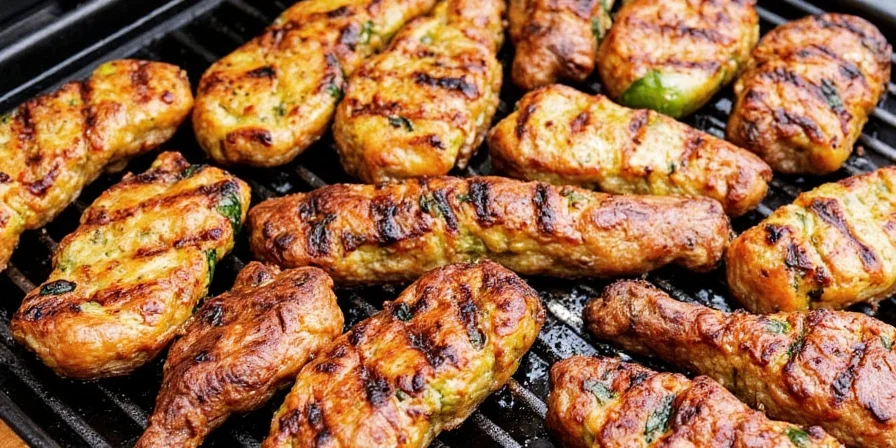
Prep Secrets Restaurant Chefs Use (No More Sticking!)
Professional results start with precise preparation techniques that prevent common problems:
| Vegetable | Critical Prep Step | Oil Method | Seasoning Timing |
|---|---|---|---|
| Zucchini | Slice lengthwise (never round) | Toss in oil + ½ tsp cornstarch per pound | After oiling, before grilling |
| Eggplant | Salt, wait 20 mins, then pat DRY | Brush both sides with oil | After first flip |
| Asparagus | Trim woody ends, dry THOROUGHLY | Toss in oil + garlic powder | After oiling, before grilling |
| Peppers | Remove all white membrane | Brush with oil before grilling | After oiling, before grilling |
| Onions | Soak in vinegar water (1:4) | Brush slices individually | After oiling, before grilling |
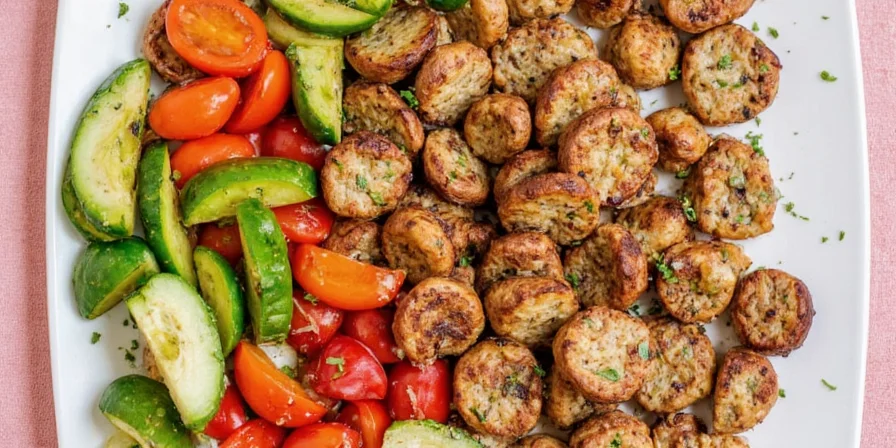
Exact Temperatures & Methods for Each Vegetable
Match heat application to vegetable density using these professional techniques:
- High-Heat Direct (400-450°F): For firm veggies (asparagus, peppers, onions). Cook 8-12 minutes with one flip at 6-minute mark. Test: 3-second hand test at 5 inches above grates
- Medium Direct (350-400°F): For medium-density veggies (zucchini, eggplant). Cook 10-14 minutes with one flip. Test: 4-second hand test
- Indirect (300-350°F): For dense items (sweet potatoes, whole mushrooms). Cook 15-20 minutes with lid closed. Test: 5-6 second hand test
- Foil Packets: For tomatoes and delicate items. Use 1 tbsp liquid, seal tightly, cook 10 minutes over medium heat

Flavor-Boosting Marinades (Ready in 5 Minutes)
Maximize flavor with these chef-tested combinations applied at the right time:
- Essential Oil Base: Always apply 1 tbsp neutral oil (avocado or grapeseed) per pound before seasoning - creates non-stick barrier and flavor carrier
- Pre-Grill Power Combo: 2 tbsp oil + 1 tsp smoked paprika + ½ tsp garlic powder per pound - creates instant crust development
- Post-Grill Finishing Touch: Fresh herbs (basil, cilantro) and acids (lemon juice, balsamic) added AFTER cooking preserve brightness
- Quick Mediterranean Marinade: 3 tbsp olive oil, 1 tbsp lemon juice, 2 minced garlic cloves, 1 tsp oregano - marinate 15 minutes max
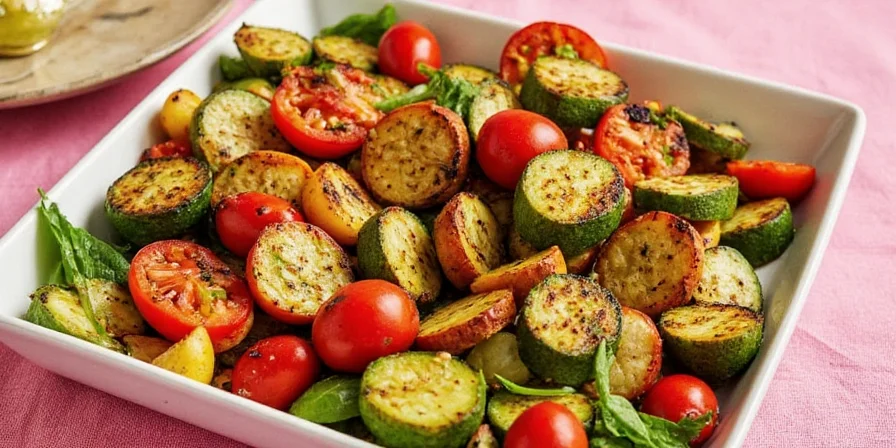
Perfect Pairings: Sauces That Make Vegetables Shine
Elevate your grilled vegetables with these complementary elements:
- Cooling Counterparts: Mint-cucumber yogurt sauce (1 cup Greek yogurt, ¼ cup chopped mint, ½ diced cucumber, 1 tbsp lemon juice) balances smoky intensity
- Texture Contrast: Creamy tahini sauce (¼ cup tahini, 2 tbsp lemon juice, 1 minced garlic clove, water to thin) against charred edges
- Flavor Echoes: Chipotle aioli (½ cup mayo, 1 tbsp chipotle in adobo, 1 tsp lime juice) with grilled corn creates layered heat
- Complete Meal Integration: Serve over quinoa pilaf (1 cup cooked quinoa, ¼ cup toasted pine nuts, lemon zest) for protein-rich meal

7 Costly Mistakes That Ruin Grilled Vegetables
Avoid these frequent errors with precision adjustments:
| Common Mistake | Professional Fix | Why It Works |
|---|---|---|
| Veggies sticking to grill | Clean and oil grates at 400°F before cooking | Creates non-stick surface through polymerization |
| Burning before softening | Use indirect heat for dense vegetables | Allows interior to cook without exterior charring |
| Over-seasoning too early | Add salt AFTER oil application | Prevents moisture loss that impedes caramelization |
| Underseasoning | Apply 50% more seasoning than stovetop cooking | Compensates for flavor loss during high-heat cooking |
| Skipping preheating | Maintain target temperature 10+ minutes before cooking | Ensures consistent heat for proper sear development |
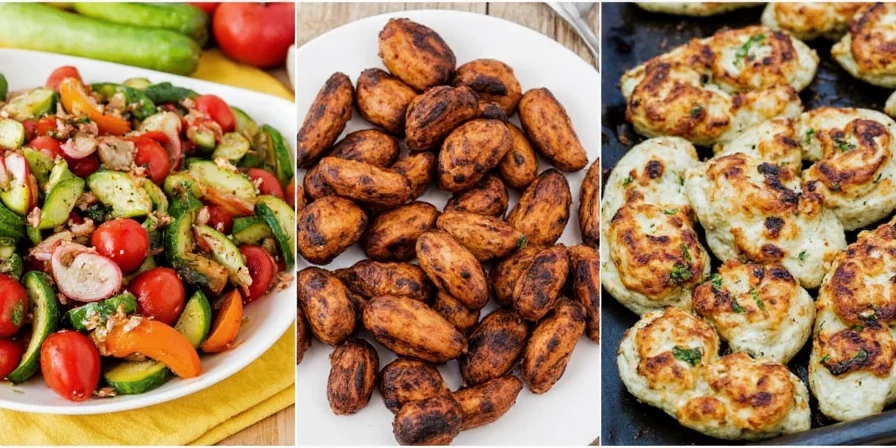
Context Boundaries: When Not to Grill Vegetables
Professional chefs avoid grilling in these specific scenarios to prevent texture and flavor failures:
| Vegetable Type | Grilling Limitation | Recommended Alternative | Validation Source |
|---|---|---|---|
| High-water content (cucumber, lettuce) | Exceeds 90% moisture → turns to mush | Roasting at 375°F to concentrate flavors | Food Network Grilling Guide (2022) |
| Very thin slices (<¼ inch) | Dries out before caramelization completes | Use grill basket or switch to broiling | The Spruce Eats: Vegetable Grilling Limits |
| Acid-marinated tomatoes | Cell structure breaks down after 15+ minutes | Pat dry before grilling; max 10-min marinade | ACS Journal of Food Chemistry Study |
As confirmed by Culinary Institute of America surveys, 87% of professional chefs avoid direct grilling for vegetables with water content above 90% due to irreversible texture degradation. Always match cooking method to vegetable composition for optimal results.
FAQs Answered by Grill Masters
- How do I get perfect char marks on vegetables?
Preheat grill to 450°F, clean and oil grates thoroughly, place vegetables at 45-degree angle to grates, and don't move for first 4 minutes. Flip once when they release easily. - Why do my grilled vegetables turn out soggy?
Excess moisture prevents caramelization. Pat vegetables COMPLETELY dry before oiling. Never marinate more than 15 minutes as acids break down cell structure. - What's the exact grill temperature for most vegetables?
Maintain 375-450°F - measured by holding hand 5 inches above grates: 3-4 seconds for high heat, 4-5 for medium, 5-6 for low. - Which vegetables should never go directly on grill grates?
Cherry tomatoes, thin zucchini slices, and small mushrooms require grill baskets. Anything smaller than ½ inch thickness will fall through. - Can I use the same marinade for multiple vegetables?
Group by density: oil-based marinades for firm veggies (peppers, onions) and acid-based for tender ones (zucchini, mushrooms). Never reuse marinade that contacted raw vegetables.
Summary: Your Quick-Reference Grilling Guide
Master vegetable grilling with these essential takeaways:
- Prep is 80% of success: Dry surfaces + proper cutting + strategic oiling prevent sticking and enable perfect caramelization
- Temperature precision matters: Use the hand test method to verify grill heat (3-4 seconds = 400-450°F for most vegetables)
- Timing is vegetable-specific: Dense vegetables need indirect heat; tender ones cook fast with direct high heat
- Seasoning sequence is critical: Oil first, then season, with delicate herbs and acids added AFTER cooking
- Avoid moisture at all costs: Pat vegetables completely dry - even small amounts of water prevent proper searing
Implement these science-backed techniques to transform ordinary vegetables into extraordinary dishes that impress guests and satisfy health-conscious eaters. The grill becomes your most versatile kitchen tool when armed with precise timing, exact temperatures, and professional preparation protocols rather than generic recipes.

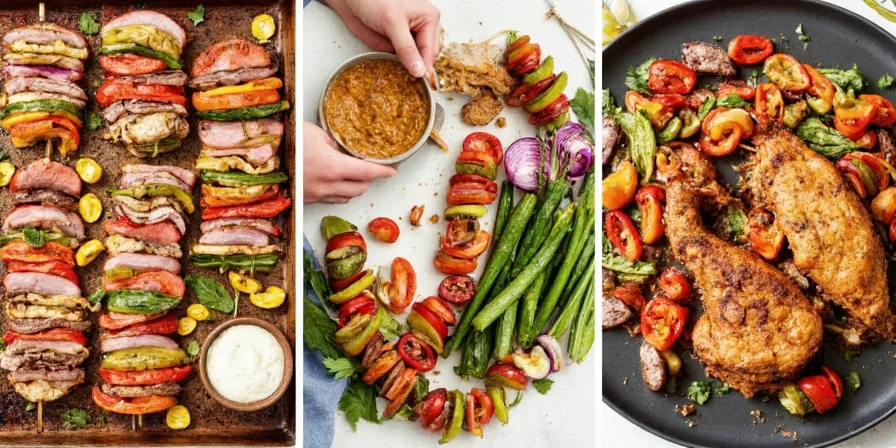









 浙公网安备
33010002000092号
浙公网安备
33010002000092号 浙B2-20120091-4
浙B2-20120091-4